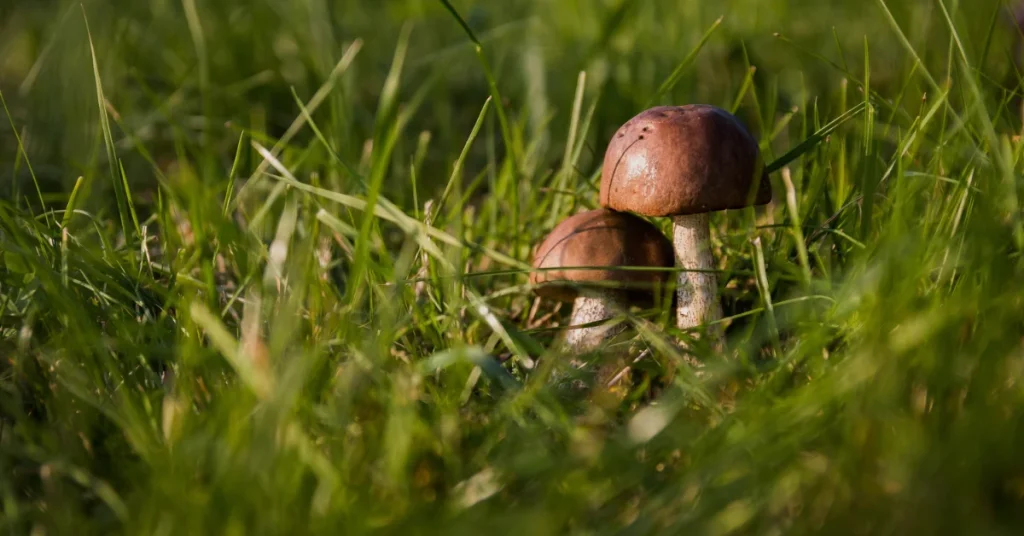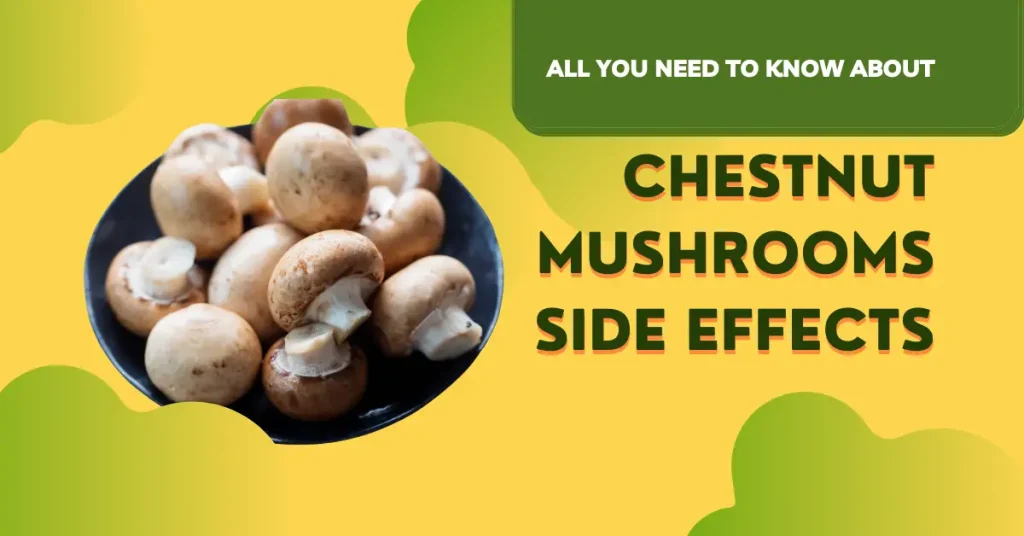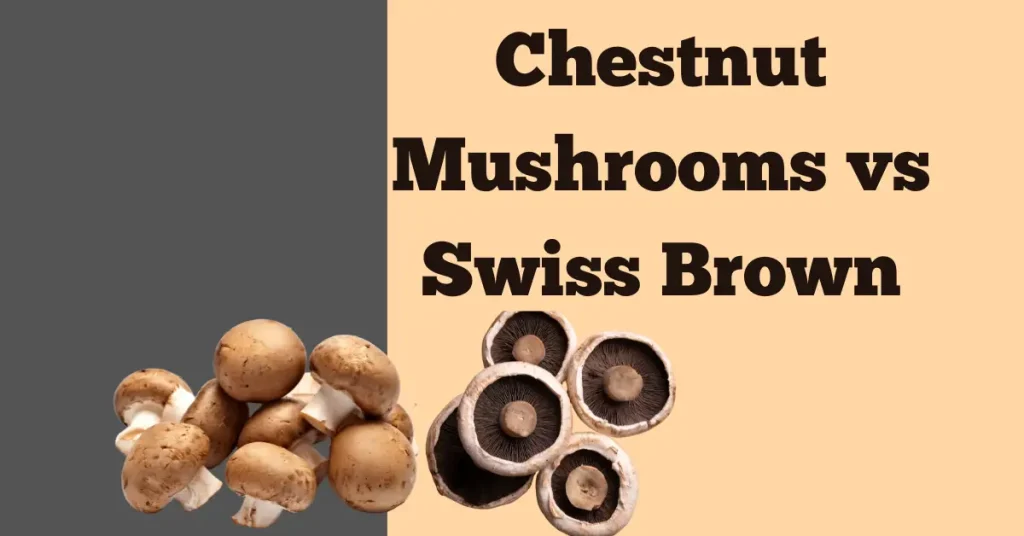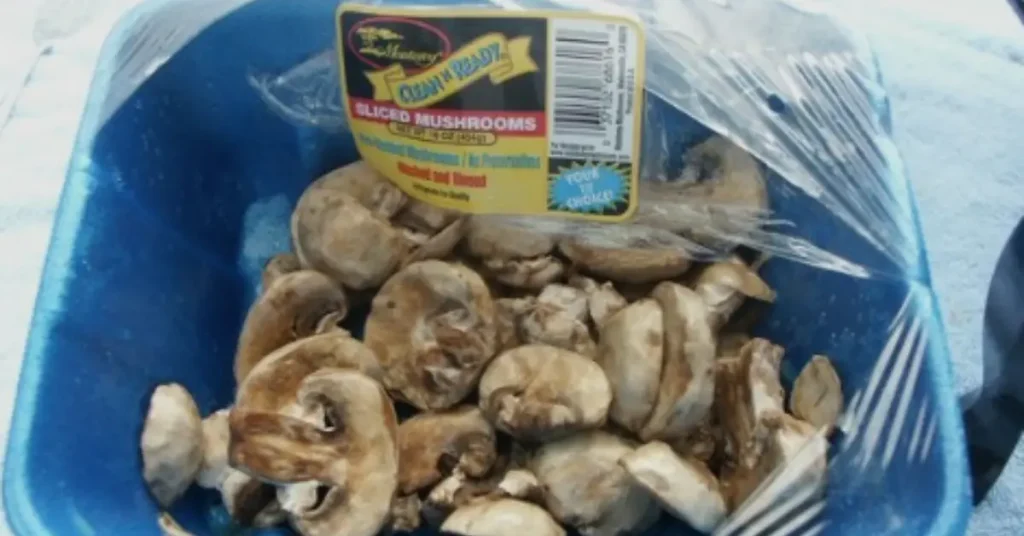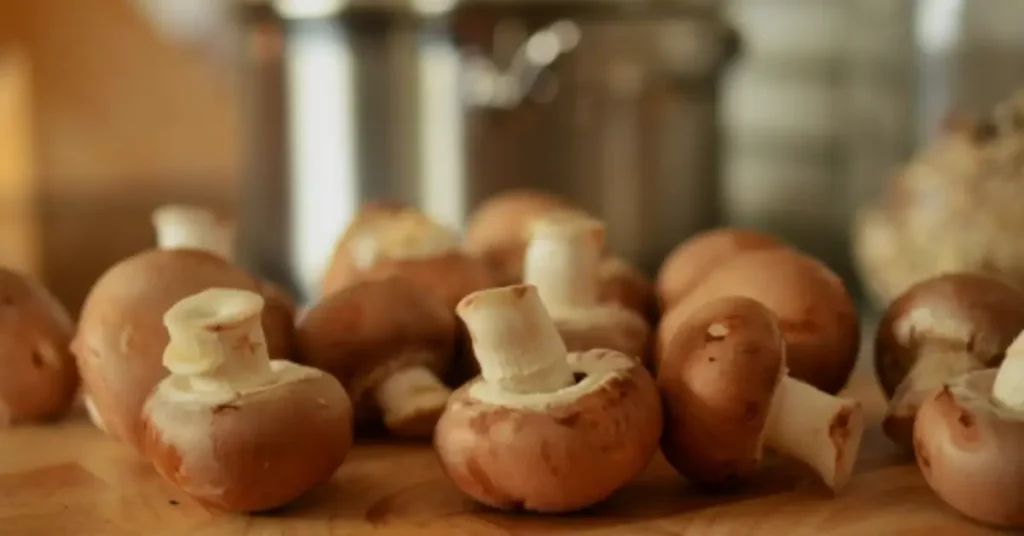10 Types Of Mushrooms For Cooking – Edible Mushrooms
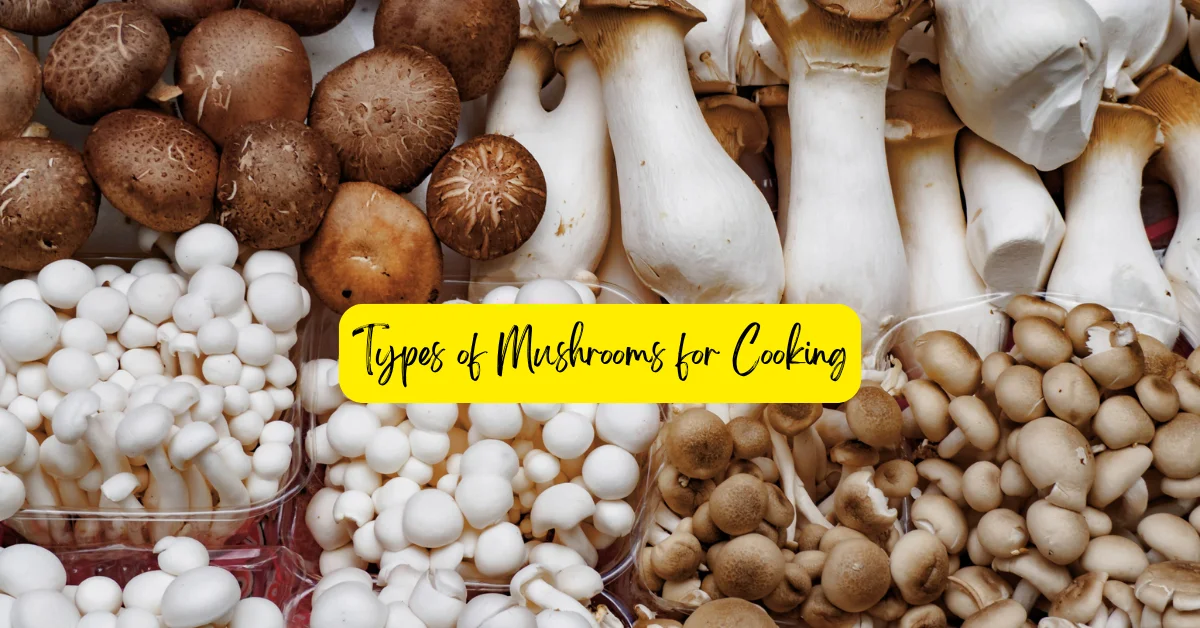
Mushrooms are types of fungi that come in several shapes, sizes, and colors. These organisms reproduce through spores and can thrive in a variety of environments. You can find mushrooms in forests, grasslands, and on decaying logs. Some mushrooms are edible and can be used in culinary dishes, but others are poisonous and harmful if consumed. Therefore, you should purchase your mushrooms from a reputable source and not forage them without guidance.
An edible mushroom provides a lot of nutrition, making it a healthy food choice. Besides being high in fiber and low in fat and carbohydrates, they also contain many vitamins A, C, B6, B12, and selenium.
Mushrooms are enjoyed in many forms all over the world. Button mushrooms, meaty oysters, chestnut mushrooms and the enigmatic honeycomb-like morels etc. are among the mushrooms that can be cooked. You can elevate your dishes to new heights by understanding the different types of mushrooms available. We’ll explore the most common types of mushrooms used in cooking and how best to use them.
10 Types of Mushrooms For Cooking
- Black Trumpet Mushrooms
- Button Mushrooms
- Chanterelle Mushrooms
- Cremini Mushrooms
- Enoki Mushrooms
- Lion’s Mane Mushrooms
- Oyster Mushrooms
- Portobello Mushrooms
- Shiitake Mushrooms
- Morel Mushrooms
Edible mushroom names list and pictures

Black Trumpet Mushrooms
This wavy, cone-shaped fungus usually appears by late summer in the Midwest and eastern US, but it thrives all winter long in the West. These mushrooms are also called horns of plenty or trumpets of death due to their trumpet-shaped caps and hollow, vase-like shapes. They are black in color, nutty or smoky and have a rich, earthy flavor. Black trumpet mushrooms are a delicious side dish simply sauteed in butter and finished with cream. It takes quite a while for them to cook down but their bold flavor won’t miss a beat.
Culinary use: Their flavor profile and texture benefit salads, soups, stews, risottos, and pasta dishes. You can also sauté or roast them as a topping for pizzas or as an ingredient in sauces and gravies.
Button Mushrooms
Button mushrooms are among the most popular and readily available. Due to their mild flavor and firm texture , a variety of dishes can be made with them. They are used because of their texture rather than their flavor. You can add them raw to a salad, and their somewhat chewy texture makes them a good addition to plain lettuce plates. Their flavor becomes richer and deeper when sautéed or grilled, perfect for sauces or side dishes.
Culinary use: Stir-fries and saucy dishes featuring vegetables and proteins such as chicken or beef work well with them. Raw or cooked, they are great in soups, salads, and pizzas. You can also stuff them or sauté them.
Chanterelle Mushrooms
The shape of chanterelles is trumpet-like, with a hollow in the middle of their caps. With a golden hue and a fleshy, firm texture, they are known for their apricot-like scent. Due to their difficulty in cultivating, foragers often find chanterelles in the wild. Cooking this mushroom with fat, such as butter and cream, releases its rich flavor, making it a delicious addition to soups, sauces, and soufflés. Due to their unique texture and taste, Chanterelles are used in upscale restaurants and culinary applications.
Culinary use: Chanterelle-infused sauces are also commonly used with poultry, pork, and seafood. You can slice them to use as a gourmet pizza topping or dehydrate them to store them for a long time. You can also use pickled chanterelles in salads, charcuterie boards, and sandwiches to add a tangy, flavorful note.
Cremini Mushrooms
Cremini mushrooms are sometimes called baby bellas or brown mushrooms, and they’re used similarly to button mushrooms. Due to their age, they are a bit browner and firmer, so they’re fantastic for soups and stews. Eating them raw in a salad is fine if you prefer uncooked vegetables, but sautéing, roasting, or grilling gives them a whole new dimension.
Culinary use: Sauteing is the most common preparation method, and these are often found in stir-fries, soups, pasta dishes, and breakfast omelets. They make a delicious savory mushroom gravy with onion, garlic, broth, and herbs.
Enoki Mushrooms
Enoki mushrooms are distinguished by their petite, glossy white caps that are affixed to thin stalks. Compared to their produced counterparts, the wild varieties are typically shorter and darker. These mushrooms have a slightly sweet and crisp flavor.
Culinary use: Because of their crispness, they are a great raw topping for salads. This species is also an excellent addition to soups, stir-fries, and sauces because it cooks up nicely. Sometimes, they are marinated and added to sushi rolls.
Lion’s Mane Mushrooms
These mushrooms get their name from their fuzzy, shaggy appearance as they grow on tree trunks. There are hints of lobster and shrimp in its flavor, but it has an earthy base. Even though this mushroom looks strange, it is edible. A subtle, almost seafood-like taste is present. Because the inside of the fungus is quite meaty, it is a great meat substitute.
Culinary use: The delicate, almost seafood-like taste of lion’s mane mushrooms makes them a popular vegetarian meat substitute in dishes such as vegan scallops or crab cakes and they are often sold in clusters. Several vegetarians enjoy grilling and serving these as mushroom steaks.
Oyster Mushrooms
Oyster mushrooms have a distinctive fan-like shape and come in various colors, including white, gray, and pink. They can be sauteed, grilled, and stir-fried because they have a mild, slightly nutty taste. Garlic, thyme, butter, and white wine also pair well with oyster mushrooms.
Culinary use: During cooking, their ability to absorb flavors makes them a popular choice for marinating or seasoning. In many East Asian dishes, they add heft to stews. Use them in a vegan version of fish sauce, pulled mushroom tacos, or Instant Pot Japchae.
Portobello Mushrooms
It’s also known as portabella or portobello mushrooms, which are a popular pick among chefs. Portobello mushrooms are large (like the size of your hand), meaty, and flavorful. They make a great vegetarian meat alternative because they are dense and can be grilled, roasted, or broiled.
Culinary use: Portobellos are frequently used as a meat substitute in vegetarian dishes such as burgers or stuffed with cheese, herbs, and breadcrumbs. They can also be sliced and added to pasta dishes or risotto.
Shiitake Mushroom
The shiitake mushroom is another common mushroom variety found in grocery stores, known for its robust flavor and appearance in Asian dishes. The simplest method to recognize them is to look for their brown umbrella-shaped tops that slightly curl. Their distinctive umbrella-shaped cap gives them a meaty texture and an earthy, smoky, and slightly sweet aroma.
Culinary use: The umami taste of shiitake mushrooms makes them a popular ingredient for soups, stir-fries, and sauces. You can stuff them with cheese, breadcrumbs, herbs, and other ingredients for a crowd-pleasing hors d’oeuvre.
Morel Mushrooms
Because of their unique honeycomb look and rich, nutty flavor, morels are among the most sought-after mushroom varieties. Morel mushrooms can even be pickled by some chefs and served with cheese and charcuterie. For this particular type of mushroom, eating it raw is not recommended because cooking it neutralizes its natural poisons.
Culinary use: They are frequently seen with meats or packed inside ravioli, and their rich flavor goes well with various cuisines. They are wonderful on their own, in spaghetti sauces, or sautéed with butter.
Tips for Cooking Mushrooms
Mushrooms are packed with nutrients, offer health benefits such as a good source of protein, fiber, and antioxidants. Whether you’re a seasoned home cook or just starting out, The following tips will help you prepare mushrooms:
Cleaning: Mushrooms can swiftly absorb water, much like sponges. Use a soft brush or a moist paper towel to lightly wipe them to remove any remaining dirt or debris before cooking, instead of washing them off.
Read About: Chestnut Mushrooms Cleaning
Storage: Keep mushrooms refrigerated in a paper bag. Plastic bags should not be used since they can retain moisture and hasten the decline of the mushrooms. While some mushrooms, like porcini and chanterelles, are best eaten within a few days of purchase, most mushrooms will keep for approximately a week.
Read This: Store Chestnut Mushrooms
Slicing: For constant texture development and even cooking, slice or cut the mushrooms into uniform sizes.
Cooking: When cooking mushrooms, warm your skillet to a medium temperature rather than a high one. At this medium temperature, mushrooms release moisture and acquire deeper tastes. If the skillet is overly heated, the mushrooms will turn mushy.
Avoid overcrowding: When preparing mushrooms, try not to pack your skillet too full; this will result in steaming instead of browning. If your pan isn’t large enough, it is a good idea to batch-cook them instead of trying to brown them all at once.
Conclusion
From the everyday Button mushroom to the rare Black Trumpet, every kind adds something special to the culinary arts. Sautéing or pan-frying mushrooms will allow them to absorb some fat and become richer and creamier, which will maximize the taste in every bite.
Enjoy the edible mushrooms.

Hi, I am Nazish Arif. I am a Food Scientist. On this Blog, I do share insights about Chestnut Mushrooms, Mushrooms Recipes, along with information of other mushrooms as well.

